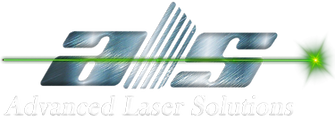
Rail
The rail industry in Australia is a vital sector that requires innovative solutions to meet the unique needs of rail manufacturing, maintenance, and repair. Industrial laser technology has emerged as a key enabler in the sector, offering a range of applications that cater to the specific requirements of rail manufacturing. From cleaning and surface preparation to welding, cutting, and marking, lasers have become an essential tool for many rail manufacturers.
Laser Cleaning
Industrial laser cleaning is a non-abrasive and non-toxic process that uses high-powered lasers to remove contaminants, such as rust, grease, and grime, from surfaces. This technology is ideal for surface preparation, restoring, and refurbishing rail components and machinery. Some of the benefits of laser cleaning in the rail industry include:
• Improved surface preparation: Laser cleaning ensures a clean surface for coating, painting, or bonding, resulting in a stronger and more durable finish.
• Increased efficiency: The process is fast and precise, reducing production time and increasing productivity.
• Reduced waste: Laser cleaning eliminates the need for chemicals and water, reducing waste and minimising environmental impact.
Laser Welding
Industrial laser welding is a precise and efficient process that uses a high-powered laser beam to join materials. This technology is commonly used in the rail industry for applications such as:
• Railcar manufacturing: Laser welding is ideal for welding railcar components, such as car bodies and bogies.
• Locomotive manufacturing: Laser welding is used in the production of locomotive components, such as engine blocks and cylinder heads.
• Component welding: Laser welding is used to weld rail components, such as axles and wheelsets.
Laser Cutting
Industrial laser cutting is a versatile and accurate process that uses a high-powered laser beam to cut various materials, including metals, plastics, and composites. This technology is widely used in the rail industry for applications such as:
• Component cutting: Laser cutting is ideal for cutting complex shapes and designs for rail components, such as brake pads and suspension components.
• Prototype development: Laser cutting is used in the development of rail prototypes and concept trains.
• Production of complex shapes: Laser cutting is used to cut complex shapes and designs for rail components, such as engine components and transmission systems.
Laser Marking
Industrial laser marking is a non-contact process that uses a high-powered laser beam to mark or engrave various materials. This technology is commonly used in the rail industry for applications such as:
• Serial number marking: Laser marking is used to mark serial numbers on rail components and equipment.
• Labeling: Laser marking is used to label rail components, such as engine components and braking systems.
• Aesthetics: Laser marking is used to create decorative designs and patterns on interior and exterior components.
By incorporating industrial laser technology into their processes, rail manufacturers in Australia can improve the quality and efficiency of their operations, while also reducing waste and minimising environmental impact. Whether it's cleaning, welding, cutting, or marking, lasers offer a range of innovative solutions for various rail manufacturing applications.
